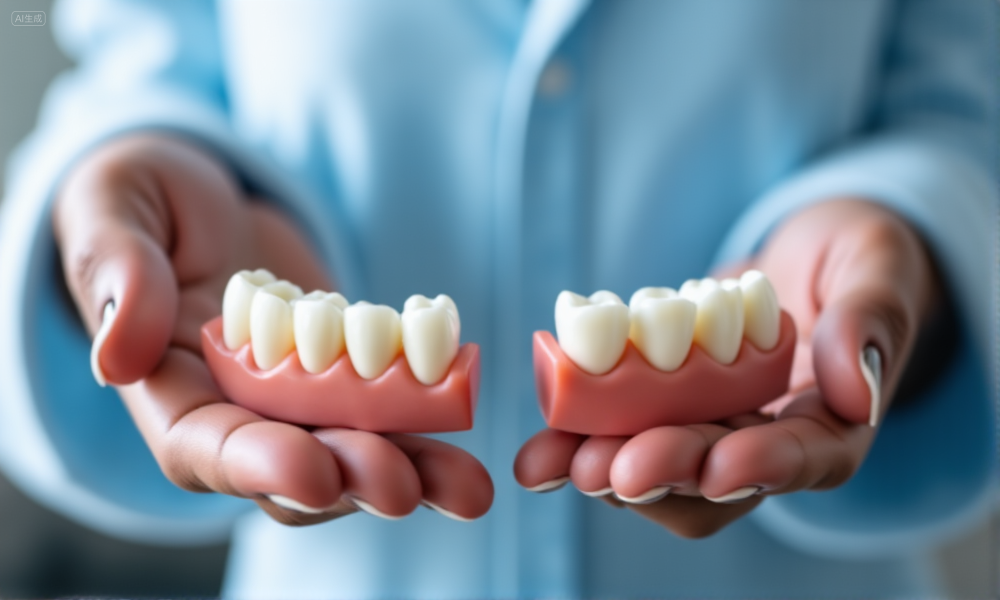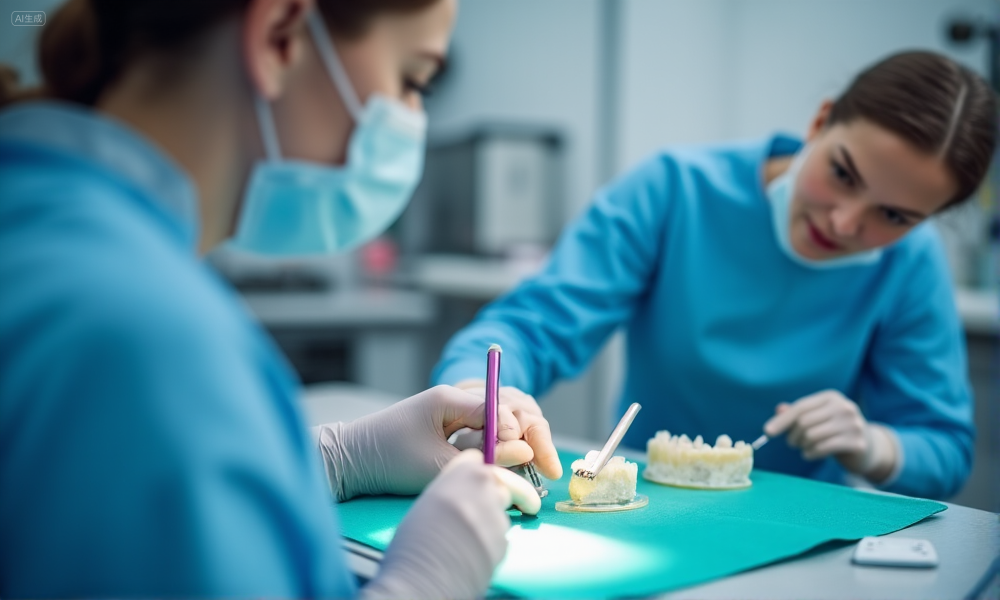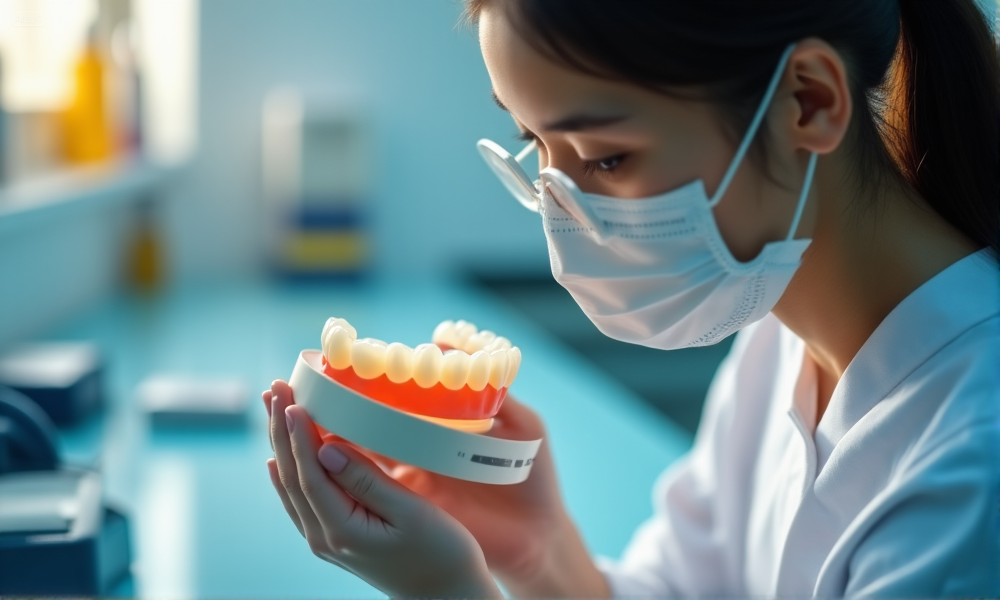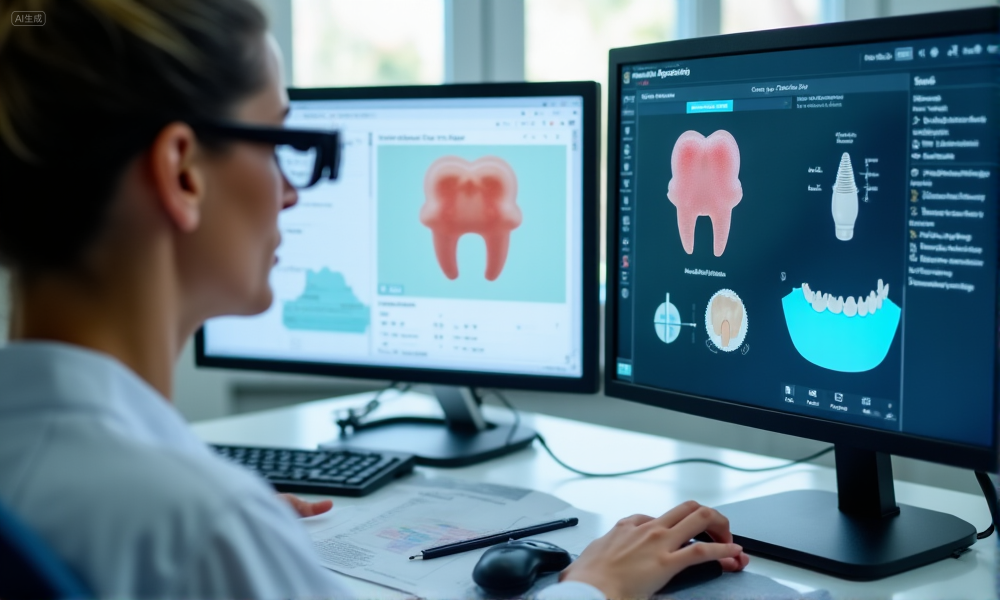In dental implant restorations, maintaining consistent quality and minimizing remakes are critical for cost control, operational efficiency, and building lasting trust between clinics, procurement teams, and lab partners. From a procurement standpoint, success hinges on defining measurable standards, preventing common production errors, and working in sync with a capable, well-documented supplier.
Key evaluation factors
- Fit and occlusion accuracy – Verify seating precision, balanced occlusion, and passive fit through trial cases and structured visual inspections.
- Material reliability – Prioritize biocompatible, durable options such as zirconia or e.max, and confirm batch-to-batch consistency.
- Aesthetic consistency – Assess surface finish, shade matching, and anatomical contour in representative sample restorations.
- Case documentation quality – Require complete STL files, clear photographs, and detailed clinical notes to prevent errors.
- Digital workflow integration – Use CAD/CAM-compatible formats and secure cloud-based submission tools to avoid data loss.
- Quality control process – Establish KPIs, schedule regular audits, and track remake metrics for ongoing improvement.
Strategies to reduce remakes
- Define clear specifications and assign a dedicated QC contact for each account.
- Validate new suppliers through sample case evaluations before scaling production.
- Maintain open communication channels and structured feedback loops.
- Align supplier processes with recognized industry standards such as ISO, CE, and FDA.
Embedding these practices into supplier relationships enables procurement teams to secure dependable quality, faster turnaround times, and fewer remakes—strengthening every link in the dental implant restoration supply chain.
What Are the Key Quality Indicators for Dental Implant Restorations?
A high-quality dental implant restoration should meet measurable standards for fit, function, and longevity. For procurement teams, three core indicators stand out: accurate seating and occlusion, material performance, and clear visual evidence from sample cases. Focusing on these benchmarks helps identify reliable manufacturing partners and avoid costly remakes.

dental-lab-inspection-implant-restoration-fit
How to assess fit accuracy, occlusion, and passive seating
Precise fit is critical to prevent mechanical stress and biological complications.
- Margin fit check – Use magnification to ensure the crown margin aligns with the abutment without visible gaps.
- Occlusal contact analysis – Verify balanced occlusion with articulating paper to prevent premature contacts.
- Passive seating confirmation – Ensure the restoration seats fully without force; resistance often signals inaccuracies in the STL or model.
Why material selection affects durability and biocompatibility
Material choice determines not only the restoration’s strength but also its interaction with surrounding tissues. Zirconia offers high fracture resistance and minimal wear on opposing dentition, while titanium abutments ensure stable integration with implants. Choosing ISO-certified materials with proven biocompatibility reduces the risk of allergic reactions and long-term failures. These considerations are central to procurement evaluations and should be part of any supplier’s documented specifications.
Reviewing sample cases and restoration photos for visual quality checks
- Surface finish – Look for smooth, stain-free surfaces that match natural dentition.
- Shade accuracy – Compare photographs to shade guides under consistent lighting.
- Anatomical contouring – Ensure morphology supports function and aesthetics.
- Consistency across cases – Evaluate whether multiple restorations show uniform quality, indicating stable manufacturing processes.
Reviewing actual work samples—ideally from similar case types—provides tangible proof of a lab’s capabilities. Procurement teams can reference resources like implant prosthetics quality guidelines to standardize evaluations.
A supplier capable of consistently delivering precise fit, proven material performance, and visually verifiable quality positions themselves as a dependable partner. These indicators form the baseline for reducing remakes and ensuring long-term satisfaction in implant restoration projects.
While reducing remakes is vital, it’s only one factor in selecting the right lab. For a complete framework that also covers technical capabilities, certifications, and long-term partnership considerations, read our main guide: What to Consider When Choosing a Dental Implant Lab Partner.
What Common Factors Lead to High Remake Rates in Implant Restorations?
High remake rates in implant restorations are rarely the result of a single mistake—they usually arise from a combination of errors in data capture, incomplete documentation, and inconsistencies during production. Recognizing these root causes allows procurement teams and lab partners to address issues before they become costly.

dental-lab-remake-analysis-comparison
Frequent technical errors in STL files or impressions
- Distorted scan data – Poor intraoral scanning technique or unstable impression trays can create marginal gaps.
- Incorrect bite registration – Occlusal discrepancies often lead to premature contacts and chairside adjustments.
- Incomplete surface capture – Missing critical anatomy, such as subgingival margins, results in ill-fitting restorations.
Incomplete case documentation and missing clinical details
A regional dental group we worked with once faced repeat remakes because case files lacked essential parameters like implant platform size and opposing dentition photographs. Once we standardized their submission forms to include implant system, occlusal scheme, and high-resolution soft tissue images, remake frequency dropped significantly.
- Include all implant and abutment details – System name, platform size, and connection type.
- Specify occlusal scheme – Whether mutually protected or group function is preferred.
- Add visual references – Consistent photo documentation for shade and contour accuracy.
Material defects or processing inconsistencies during manufacturing
Even with perfect inputs, production quality can falter if materials or equipment aren’t controlled. Variations in zirconia sintering temperatures can cause shrinkage, while resin patterns cured under inconsistent conditions may distort. Reliable suppliers track material batches, calibrate equipment regularly, and document every critical step to ensure repeatable quality.
A systematic review on dental prosthesis remakes found that more than 60% of remakes originate from preventable data or documentation errors. By addressing these factors jointly with the lab, dental teams can reduce waste, improve turnaround, and protect patient satisfaction.
Practical Ways to Collaborate with Your Dental Lab to Lower Remake Rates
Lowering remake rates is most effective when both the clinic and the lab treat quality as a shared responsibility. Clear expectations, structured communication, and small-scale testing before bulk orders can prevent most issues that lead to rework.

overseas-dental-lab-collaboration-qc-meeting
Establishing clear specifications and communication protocols
- Standardized design parameters – Agree on margin line placement, occlusal scheme, and file format before starting production.
- Case submission templates – Use a fixed checklist to ensure implant system, shade, and materials are consistently documented.
- Response time agreements – Define how quickly the lab should confirm receipt and request clarifications.
Assigning a dedicated QC contact for each account
One multi-location clinic we work with reduced remakes dramatically after appointing a single liaison between their practices and our lab. This QC contact pre-reviewed all incoming scans, flagged missing details, and coordinated real-time adjustments with our production team. By centralizing case communication, they cut remake rates by two-thirds in less than four months, while also improving turnaround times for complex implant cases.
Using trial runs and sample validations before bulk orders
- Select a representative case mix – Include both single-unit and multi-unit restorations.
- Run a controlled pilot batch – Produce the restorations under the same conditions as standard orders.
- Evaluate against agreed KPIs – Review fit, shade accuracy, and delivery timing; document feedback before scaling production.
When dental teams and labs collaborate on specifications, assign accountable QC roles, and validate workflows before committing to volume, the result is fewer remakes and more predictable quality. As an overseas dental lab partner, we see these practices build trust and strengthen long-term supply relationships.
What Role Do Quality Standards and Certifications Play in Consistency?
Quality standards and certifications act as a shared language between dental labs and procurement teams, ensuring every restoration meets defined benchmarks for safety, precision, and durability. By choosing suppliers who maintain recognized certifications and documented processes, dental practices can reduce variability and maintain long-term quality.

dental-lab-quality-certificates-display
Understanding ISO, CE, and FDA requirements for implant restorations
- ISO 13485 – Specifies requirements for a quality management system in medical device manufacturing, including traceability and process control.
- CE Mark – Confirms that products meet EU safety, health, and environmental protection requirements.
- FDA Registration – For US-bound products, ensures compliance with device classification and manufacturing standards.
How to verify a supplier’s compliance with industry benchmarks
- Request current certificates – Ensure documents are valid and issued by accredited bodies.
- Confirm audit frequency – Ask how often third-party audits are performed and review summaries if available.
- Inspect process documentation – Check if manufacturing steps are mapped and controlled according to certification standards.
Why documented processes improve long-term quality assurance
In one case, a distributor working with multiple suppliers noticed that only the lab with a fully documented workflow could consistently match shade and fit across orders. The documentation acted as a safeguard—when a deviation occurred, the team could quickly trace the issue and correct it without affecting other cases. This level of process visibility not only helps maintain consistency but also builds confidence in scaling production.
Certifications backed by documented procedures create a predictable baseline for quality. Partnering with a certified dental lab gives procurement teams the assurance that production standards are maintained, regardless of volume or complexity.
How Digital Workflow Integration Helps Prevent Errors and Remakes
Integrating digital workflows between the clinic and the lab minimizes data loss, reduces manual handling, and ensures consistent precision. By aligning CAD/CAM systems, using secure cloud submission tools, and refining digital design protocols, dental teams can prevent many of the issues that lead to remakes.

dental-lab-digital-workflow-cadcam-cloud
Ensuring CAD/CAM and STL file compatibility across systems
- Standardize file formats – Agree on open file formats like STL or PLY to avoid conversion errors.
- Test interoperability – Run sample files through both the clinic’s and the lab’s software before live cases.
- Monitor software updates – Ensure both sides update systems in sync to prevent version conflicts.
Using cloud-based case submission tools to prevent data loss
- Select a secure platform – Choose a HIPAA/GDPR-compliant solution for sensitive patient data.
- Enable instant upload confirmations – Ensure both sender and receiver are notified when files are successfully transmitted.
- Maintain accessible archives – Keep a shared repository of past cases for easy reference in remakes or follow-ups.
Reducing manual adjustments through precise digital design
A European distributor we support transitioned from mixed analog-digital workflows to a fully integrated CAD/CAM process. This change reduced their need for chairside adjustments by over 40%. By leveraging precise digital margin marking and occlusal mapping, the lab could deliver restorations that required minimal to no touch-ups, saving time for both the clinic and the patient.
A well-executed digital dental workflow streamlines case management, improves communication, and delivers predictable results—helping to eliminate the most common remake triggers.
Steps to Implement a Quality Monitoring System with Your Lab Partner
A structured quality monitoring system allows both the dental practice and the lab to identify trends, address recurring issues, and maintain consistent standards over time. By setting measurable KPIs, reviewing performance regularly, and acting on data insights, teams can achieve sustainable quality improvements.

dental-lab-quality-monitoring-kpi-review
Defining KPIs for quality performance and remake rates
- Remake percentage – Track the number of remakes relative to total cases.
- Turnaround time adherence – Measure the percentage of cases delivered on or before the agreed schedule.
- First-time fit rate – Record the proportion of restorations that require no chairside adjustment.
Scheduling regular quality audits and collaborative case reviews
- Agree on audit intervals – Quarterly reviews are common for ongoing accounts.
- Select representative case samples – Include various restoration types and complexity levels.
- Document findings and assign follow-ups – Ensure each observation has a responsible party and a resolution timeline.
Using performance data to refine processes and improve consistency
One DSO partner reduced remake rates by 30% after we introduced a shared dashboard for tracking case outcomes. The visibility allowed both teams to spot recurring issues—such as marginal misfits linked to specific scan sources—and adjust scanning protocols and lab workflows accordingly. Over time, this data-driven approach aligned expectations and removed guesswork from quality discussions.
Implementing a shared monitoring system transforms quality control from a reactive process into a proactive collaboration. Partnering with an overseas dental lab that can track and act on these metrics ensures both sides are invested in long-term success.
Conclusion
Consistently high-quality implant restorations are the result of clear standards, transparent communication, and data-driven collaboration between clinics and their lab partners. By focusing on measurable quality indicators, addressing the root causes of remakes, and integrating digital and monitoring systems, procurement teams can reduce risk while improving patient outcomes. Working with an overseas dental lab that understands both manufacturing precision and the realities of clinical workflows ensures every case benefits from proven processes, reliable timelines, and shared accountability—foundations that strengthen trust and long-term partnerships.


